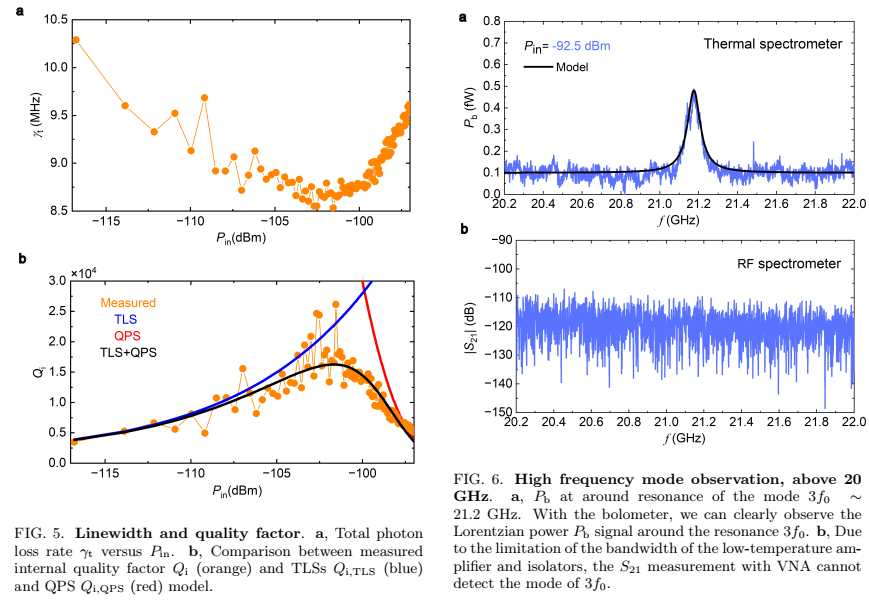Thermal spectrometer for superconducting circuits
2024-09-25 14:34
2988 浏览Source: https://arxiv.org/abs/2409.13417
Abstract: Superconducting circuits provide a versatile and controllable platform for studies of
fundamental quantum phenomena as well as for quantum technology applications. A
conventional technique to read out the state of a quantum circuit or to characterize its
properties is based on rf measurement schemes involving costly and complex instrumentation.
Here we demonstrate a simple dc measurement of a thermal spectrometer to investigate
properties of a superconducting circuit, in this proof-of-concept experiment a coplanar
waveguide resonator. A fraction of the microwave photons in the resonator is absorbed
by an on-chip bolometer, resulting in a measurable temperature rise. By monitoring the
dc signal of the thermometer due to this process, we are able to determine the resonance
frequency and the lineshape (quality factor) of the resonator. The demonstrated scheme,
which is a simple dc measurement, has a wide band up to 200 GHz, well exceeding that
of the typical rf spectrometer. Moreover, the thermal measurement yields a highly frequency
independent reference level of the Lorentzian absorption signal, unlike the conventional rf
measurement. In the low power regime, the measurement is fully calibration-free. Our
technique thus offers an alternative spectrometer for quantum circuits, which is in many
ways superior with respect to conventional methods.

Conclusion: In summary, we have demonstrated operation of an
on-chip bolometric spectrometer to characterize a superconducting resonator. The measurement is done by a
simple dc measurement setup. The bolometer operates
by absorbing the energy decay of the resonator, leading
to temperature rise in the bolometer, which is detected
by measuring the dc voltage change Vth acrross a pair
of NIS thermometer junctions. The resonance frequency
and the lineshape (quality factor) of the resonator can
be determined based on the temperature change. We
have demonstrated additional advantages of the bolometer compared to standard rf measurement in the high frequency range: the bandwidth of the bolometer exceeds
that of a standard rf spectrometer. Furthermore, we
found a calibration-free regime where the measured voltage Vth follows Lorentzian spectrum. The thermal spectrometer could then be used in the single-photon regime
to perform both one-tone and two-tone spectroscopy of
a qubit.
